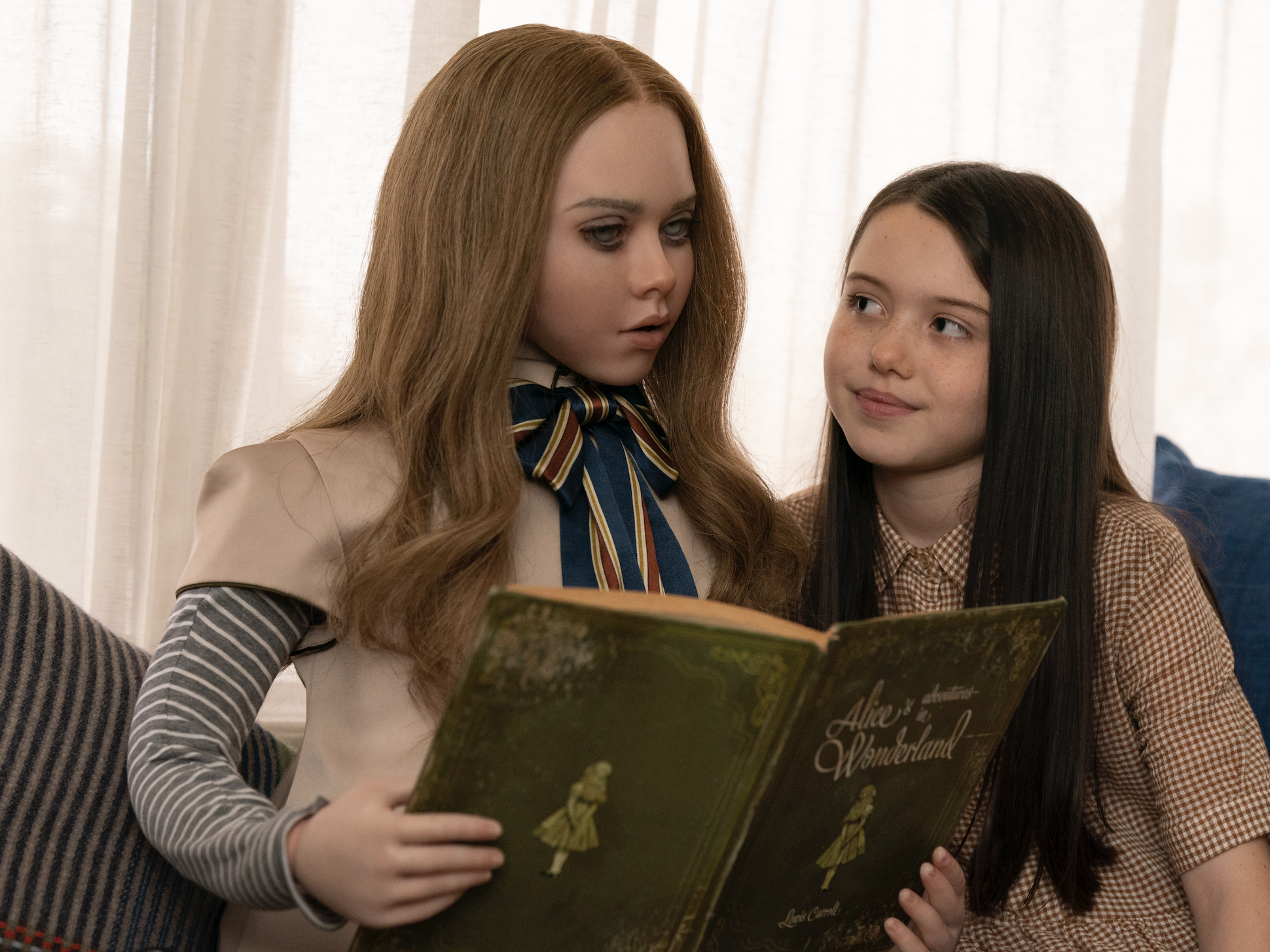We spend more time with our devices than most real people in our lives. We invite technology into our homes, giving it access to our most intimate moments and conversation, all for the sake of convenience and the dopamine hit of a “like” notification. The horror comedy M3GAN takes the question of, “How much screen time is too much?” and turns it from an issue of self-care into one of survival. We’ve received plenty of cinematic warnings about the dangers of AI, but have they ever been this much fun?
Before its release, M3GAN spawned gifs galore, with a trailer featuring a robot doll more fashionable than any American Girl (apologies, Samantha), more responsive than Siri, and as murderous as Chucky. The resulting film from Housebound director Gerard Johnstone proves that M3GAN and M3gan herself are more than just memes; this is a killer crowd-pleaser that is perfectly sinister and silly.
After her parents die in a car crash, Cady (Violet McGraw) moves from Oregon to Seattle to live with her hardworking, AI-building aunt, Gemma (Allison Williams). Gemma loves her niece, but she’s unsure how to care for the nine-year-old, so she updates a prototype robot named M3gan, aka Model 3 Generative Android, to be the perfect playmate for the grieving young girl. However, Gemma has apparently been too busy working to watch literally any sci-fi movie or episodes of Black Mirror, and she doesn’t realize that giving M3gan the ability to learn means that she will soon outgrow her programming and take her prime directive — to protect Cady at all costs — too literally. She’ll keep Cady safe from physical and emotional harm, even if it means killing a few people. Gemma probably could’ve spent more time on programming morals and ethics, but there are product deadlines to hit in time for Christmas.

What sets M3GAN apart from countless other killer robot/murderous doll horror movies is its delightfully demented script from Akela Cooper (Malignant, naturally) and the execution of its central character, no pun intended. M3gan’s dialogue is arch and delivered in instantly quotable fashion, thanks to voice actress Jenna Davis. The combination of puppetry/animatronics, special effects, and the physical performance of child actress Amie Donal intentionally place M3gan as a resident of the uncanny valley. (But let’s be real: she wouldn’t just be a citizen, this bitch would rule.) She looks almost like a real little girl, fooling those she meets on screen at first glance and then freaking them the fuck out when they realize what she actually is. The audience feels that same combination of awe, fear, and uneasy pleasure, especially when she croons eerie pop songs that send the audience into fits of WTF-induced giggles.
With those moments of unhinged humor, M3GAN refrains from feeling didactic, but it isn’t particularly subtle in its criticism of technology either. This is a PG-13 movie, and its messaging about the dangers of our devices isn’t going to fly over the heads of even the teens in the audience. The film raises privacy concerns, as well as thoughts about kids and how parents allow screens to do some of their jobs raising their kids. But will it cause anyone to think twice when they get their weekly screen time report or ask Alexa a question? Probably not; instead of turning viewers into luddites, what is most likely to linger here is M3gan, with her cheeky insouciance and already-viral dance moves.
For horror fans, M3gan marks the first partnership (but likely not the last) between producers and genre giants James Wan and Jason Blum. If this is the type of film their collaboration creates, we’re in for more rollicking rides — but hopefully not too many. At a brisk 102 minutes, M3gan doesn’t overstay its welcome, and ideally this character will follow the film’s lead. Part of what makes this movie work is its fresh approach to worn tropes, and it will lose that if we get eleventy sequels à la Saw, Insidious, The Conjuring, and The Purge.
B+
“M3GAN” is in theaters tomorrow.



